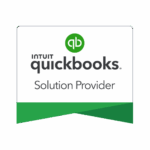A strong or winning balance sheet is one of the most vital indicators of a business’ ability to survive economic downturns and return to winning financially. Understanding a balance sheet as well as its importance is therefore critical for any small or medium size business owner. The core reasons for examining a company’s balance sheet are liquidity and solvency of the business. While the former refers to a company’s ability to meet short-term obligations, the latter refers to the company’s ability to sustain operations over the long term. Having a trusted balance sheet solution is critical for growing, or troubled corporations.
Importance of a Good Balance Sheet Solution
According to a Forbes.com, almost 50% of companies fail within four years of starting out. Corroborating this assertion, Dawn Fotopoulos, Small Business expert, and author, says success in small business begins with understanding the balance sheet. By using a balance sheet solution, small/medium scale business owners can generate business balance sheets and leverage its benefits to grow their businesses. These benefits include providing an overall picture of the company’s financial health as well as detection of early warning signs of potential pitfalls. In addition, it captures the overall value of the business
Ratios Speak Louder Than Words and Numbers
A versatile balance sheet solution will typically reveal the key ratios which determine the strength of a balance sheet.
Current/Liquidity Ratio: Dividing current assets by current liabilities gives us the current ratio. It is an indicator of a company’s ability to repay short-term liabilities using short-term assets. Generally, if the ratio is below 1, it indicates the company’s inability to meet obligations with its current liquidity.
Debt Ratio: This is derived by dividing total debt by total assets. If the ratio is below 1, the company’s assets exceed its debts. Thus, the lower the ratio, the stronger the balance sheet.
Debt-to-Equity Ratio: This is an indicator of the company’s leverage and is derived by dividing the liabilities by shareholder equity. Generally, the higher the ratio, the weaker the balance sheet.
Snapshot of a Winning Balance Sheet
Key features of a winning balance sheet solution include the following: Optimum working capital:
Optimum working capital
Positive cash flow
Balanced capital structure
Income generating assets
A successful small business is one that has gained a good understanding of its balance sheet and constantly leverages it for sustainable growth. For more information on how a balance sheet can be maintained for you without you having to do the work click here for your free quote today.






